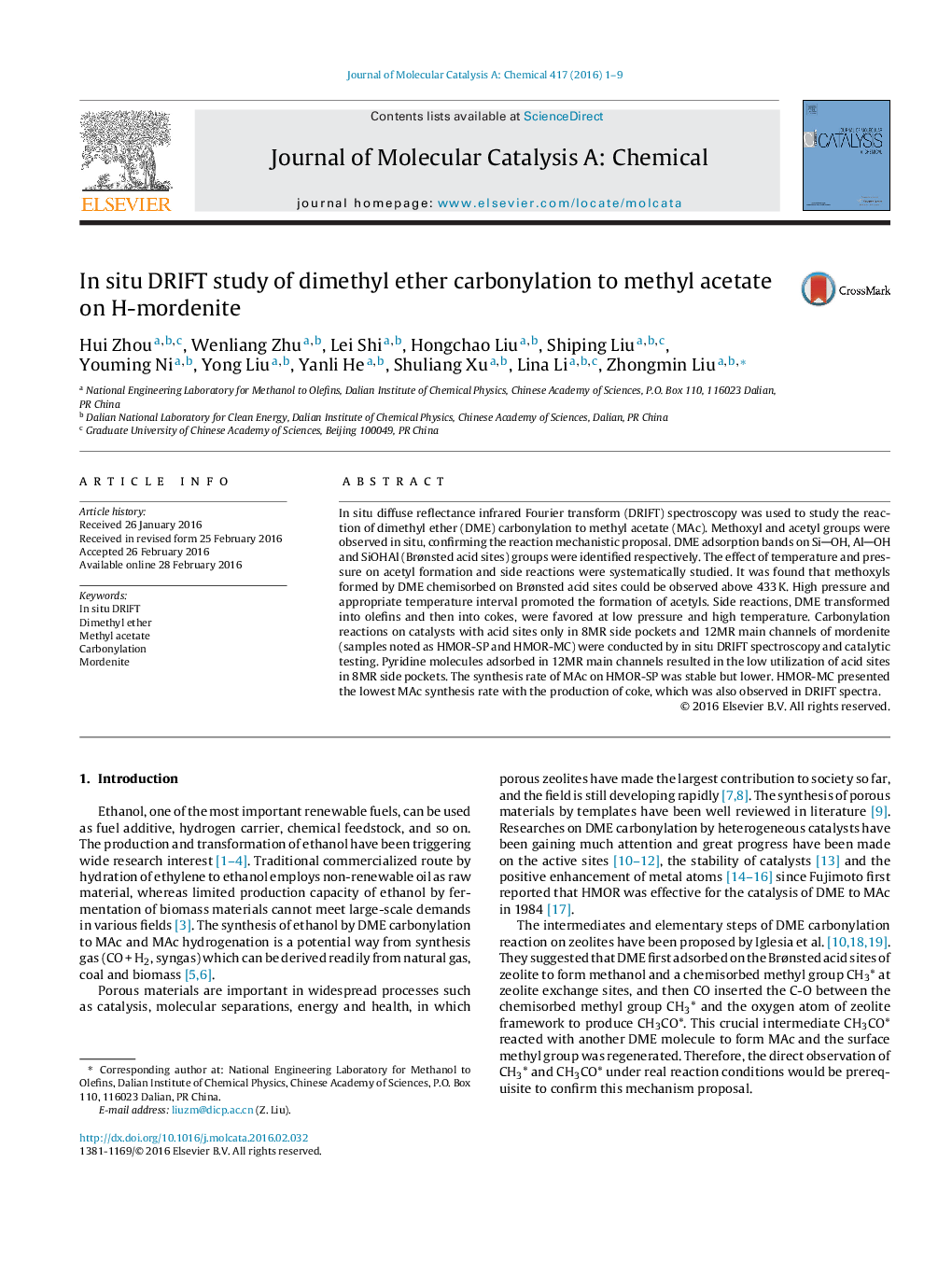| Article ID | Journal | Published Year | Pages | File Type |
|---|---|---|---|---|
| 64636 | Journal of Molecular Catalysis A: Chemical | 2016 | 9 Pages |
•Methoxyls and acetyls on HMOR were observed by in situ DRIFT spectroscopy.•High pressure and appropriate temperature promoted the formation of acetyls.•Side reactions were favored at low pressure and high temperature.•Acetyls were observed in 12MR channels, which were more active for side reactions.
In situ diffuse reflectance infrared Fourier transform (DRIFT) spectroscopy was used to study the reaction of dimethyl ether (DME) carbonylation to methyl acetate (MAc). Methoxyl and acetyl groups were observed in situ, confirming the reaction mechanistic proposal. DME adsorption bands on SiOH, AlOH and SiOHAl (Brønsted acid sites) groups were identified respectively. The effect of temperature and pressure on acetyl formation and side reactions were systematically studied. It was found that methoxyls formed by DME chemisorbed on Brønsted acid sites could be observed above 433 K. High pressure and appropriate temperature interval promoted the formation of acetyls. Side reactions, DME transformed into olefins and then into cokes, were favored at low pressure and high temperature. Carbonylation reactions on catalysts with acid sites only in 8MR side pockets and 12MR main channels of mordenite (samples noted as HMOR-SP and HMOR-MC) were conducted by in situ DRIFT spectroscopy and catalytic testing. Pyridine molecules adsorbed in 12MR main channels resulted in the low utilization of acid sites in 8MR side pockets. The synthesis rate of MAc on HMOR-SP was stable but lower. HMOR-MC presented the lowest MAc synthesis rate with the production of coke, which was also observed in DRIFT spectra.
Graphical abstractFigure optionsDownload full-size imageDownload high-quality image (179 K)Download as PowerPoint slide
